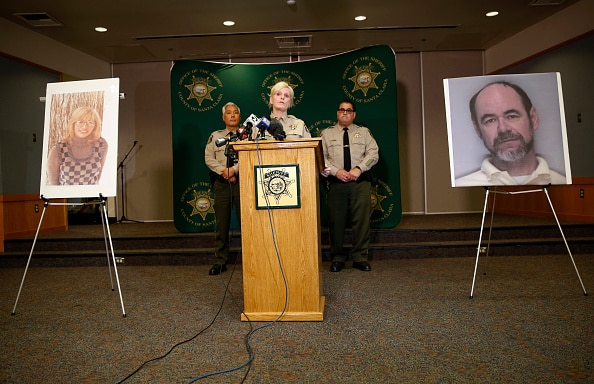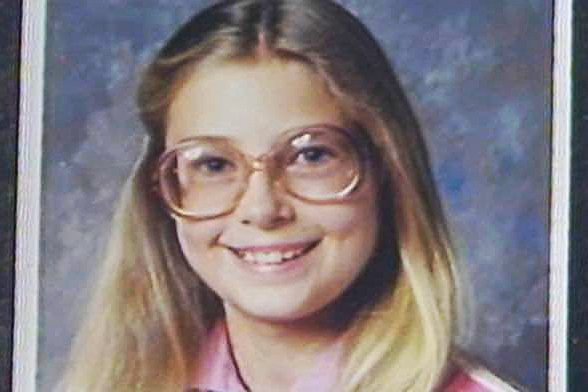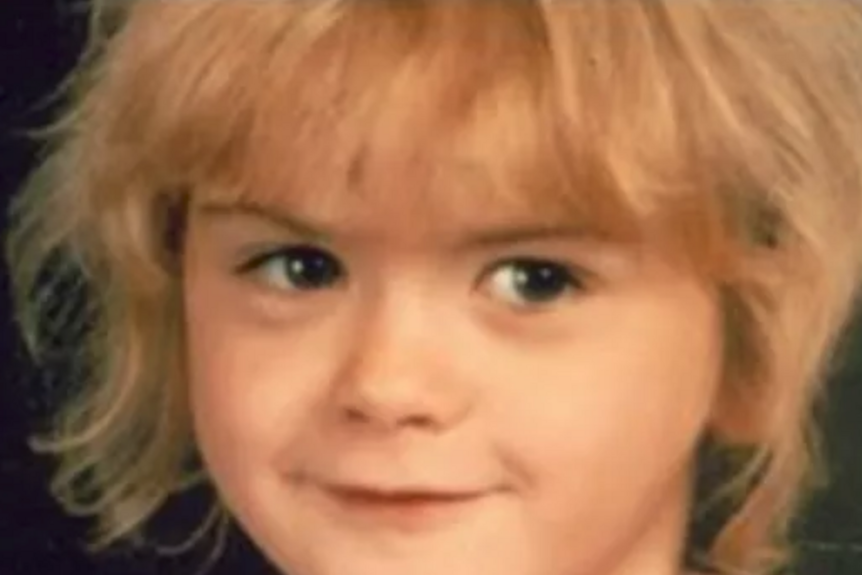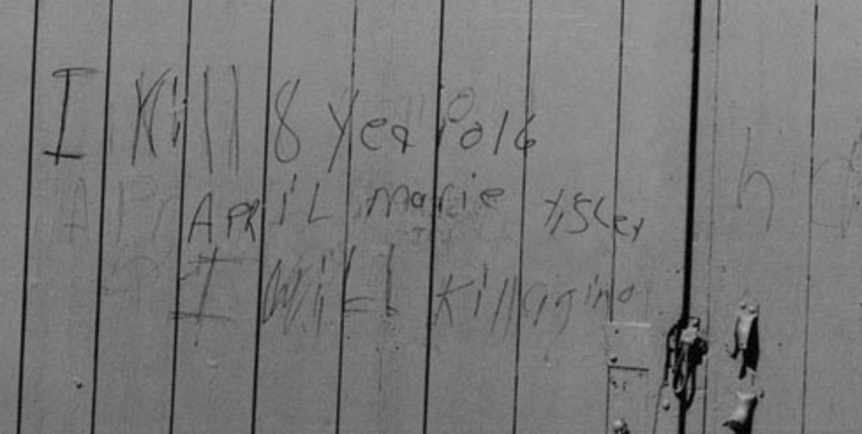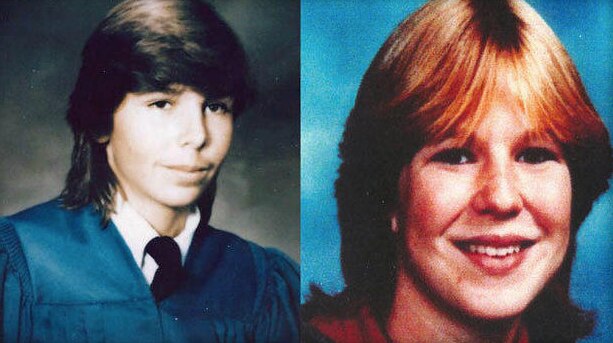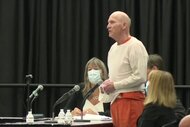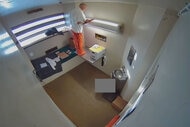Create a free profile to get unlimited access to exclusive videos, breaking news, sweepstakes, and more!
First The Golden State Killer, Now New DNA Technology Is Making Breaks In These Cold Cases
The arrest of Joseph DeAngelo this year was only the beginning.

New DNA technology helped crack the decades-old cold case of the Golden State Killer, but that’s not the only crime that may have been solved.
The methods used to arrest Golden State Killer suspect Joseph DeAngelo — who was caught after decades on the run thanks to DNA from his trash, paired with a "reverse genealogy" process — are already in play for other crimes that once made headlines, including the hunt for another California phantom, the Zodiac Killer. But, the same technology has already been credited with leading to arrests in several cold cases, and more are expected.
Police took a DNA sample found at one of the Golden State Killer's crime scenes that sat in storage for decades and ran it through GEDmatch. It matched with one of DeAngelo's distant relatives. Investigator and DNA expert Paul Holes and his team created about 25 family trees and combed through thousands of relatives from the 1800s until the present day, which eventually led them to DeAngelo. Then, police took a tissue from DeAngelo's trash and matched it with the crime scene DNA. Then came his arrest.
The new advancements in technology which have allowed for the DNA and genealogy combo that led to DeAngelo's arrest have also spawned a debate about privacy.
GEDmatch's co-founder Curtis Rogers said law enforcement’s use of his site raised concerns by civil liberties groups.
“This was done without our knowledge, and it’s been overwhelming,” he told The Associated Press.
Privacy laws cannot stop police from accessing ancestry sites, which can link unsuspecting people to crimes using DNA that their family members, even distant ones, submitted. In a statement following DeAngelo's arrest, GEDmatch warned its participants that, "If you are concerned about non-genealogical uses of your DNA, you should not upload your DNA to the database and/or you should remove DNA that has already been uploaded."
Privacy concerns aside, the new technology is credited with a handful of arrests in unsolved murders, and it's being hailed by proponents as something with real potential in solving other cold cases.
This same process was used to make the following recent cold case breakthroughs:
1974 murder of Arlis Perry
Arlis Perry was just 19 when she was murdered at the Stanford Memorial Church, located at California's Stanford University. She was killed with a single ice pick through her brain, and she was molested with a three-foot candle, according to ABC News; the teen was found naked from the waist down and posed. Another candle was forced into her blouse. Strangulation wounds were found on her neck. Perry, a newlywed, had gone to the church to pray after her and her husband had a fight.
Stephen Crawford, then a security guard at the school, discovered her body before alerting police, a move police always found suspicious. He was always the main suspect behind the murder but there was never enough evidence to convict him, Santa Clara County Sheriff Laurie Smith said at a recent press conference. This summer, DNA evidence backed up those suspicions. Two objects from the crime scene, semen on a pillow and a handprint on a candle, were found to have DNA decades after the murder; at the time, DNA evidence didn’t exist. On June 28, police arrived at his home to serve a related search warrant to obtain further evidence. Police said he responded by fatally shooting himself in the head.
"We finally have closure on this case," Santa Clara County Sheriff Laurie Smith said at a July news conference.
1986 killing of Michella Welch
Michella Welch was only 12 years old when she was raped and murdered in Washington State on March 26, 1986. The sixth-grader and her sisters were playing in a Tacoma park a little before lunch. At some point, Welch decided to go home to get lunch for her and her sisters. Welch never returned, but her bike and some sandwiches that she had prepared for her sisters were found in the park according to police. Her body was found by a search dog later that night. DNA was recovered from her body that night, which didn’t yield a DNA profile until 2006. However, it didn’t match any DNA profiles available in databases at the time.
Then, this year, Tacoma Police detectives teamed up with genetic genealogists to try to identify the suspect's family members, Pierce County Prosecutor Mark Lindquist said in a press release. A genealogist at Parabon Nanolabs, genetic profiling company whose work has recently lead to arrests in cold cases around the country, was able to narrow it down to two brothers who shared a DNA profile which matched the DNA found at the 1986 crime scene. Gary C. Hartman, 66, was one of these brothers and in early June, police began following him. On June 5, cops followed him to a hospital and then to a nearby restaurant where he and a co-worker chatted over breakfast. Ten feet away from Hartman, a detective sat at a table, waiting to snatch something that experts could extract DNA evidence from. That item was a brown paper napkin, which a restaurant employee gave to the detective at his request. The napkin was submitted to a crime laboratory, which determined that it was a match.
Hartman was arrested on June 20 and charged with murder in the first degree with premeditation and, in the alternative, murder in the first degree while committing or attempting to commit the crime of rape in the first degree, five days later. His bail was set at $5 million.
Tacoma Police Chief Donald Ramsdell called the case a great example of "advancements in DNA identification and computer modeling combined with tried and true police techniques” in a press conference after the big break in the case.
1977 murder of Leona Davis
Mother Leona Davis had just tucked in her sons, ages 4 and 7, when she was attacked in their Los Angeles home. A man broke into their home and robbed, raped and then stabbed the 25-year-old mother in the neck while her children were forced to watch. DNA and fingerprint evidence were collected at the scene and this spring, they led to a break in the brutal case.
Kenneth Ray Matthews, now 60, was arrested in April and has been charged with capital murder, the Los Angeles County District Attorney’s Office said. Rape and robbery charges cannot be filed because of the statutes of limitations. Matthews was 18 at the time of the crime.
The Los Angeles Police Department used the DNA collected at the crime scene and matched it to piece of dining ware that Matthews threw out last year, police say.
If convicted, Matthews could face life behind bars.
1992 killing of Christy Mirack
Christy Mirack, a Pennsylvania school teacher, was raped and killed in 1992. The 25-year-old teacher had been beaten, strangled and raped. Her pants and underwear were ripped off, while her shirt and jacket were pushed upwards. A wooden cutting board was beside her. Semen was inside her, and beneath her, according to the Lancaster Online. She was also surrounded by Christmas presents for her students, with a note saying ,"Wishing you a very Merry Christmas and a great 1993! Love, Miss Mirack.”
Her body was found in her home by the school’s principal on December 21 after she didn't show up at work and repeated calls to her home went unanswered, according to Penn Live in Harrisburg. Her case went cold until this summer when police arrested Raymond Charles Rowe, 49, a deejay in Lancaster County known as DJ Freez. He was charged with one count of criminal homicide for killing Mirack, according to the Lancaster Online. Parabon NanoLabs was able to track the deejay down using the new DNA technology. DNA from the semen matched genealogy samples of Rowe’s relatives. Police then swiped a water bottle and some chewing gum that Rowe touched while DJing an event at a school in May.
Rowe will be charged with first-degree murder and could face the death penalty, Lancaster County District Attorney Craig Stedman said at a news conference announcing the arrest.
1988 murder of April Tinsley
First grader, April Tinsley, was walking to a friend’s home in Fort Wayne, Indiana to pick up an umbrella when she was abducted. The 8-year-old's body was found three days after her disappearance in a ditch by a jogger. She had been suffocated and had been dead for at least two days. There was DNA left behind in her underwear.
Police worked with Parabon NanoLabs who used genealogy to trace DNA found on Tinsley’s body back to a suspect. This July, they narrowed down DNA found at the scene to a man named John Miller and his brother, according to a probable cause affidavit. Police then grabbed used condoms from Miller’s trash and they say that DNA matched up with DNA that was recovered from Tinsley's underwear. According to police, Miller confessed to abducting the first-grader near her Fort Wayne home, before raping and killing her in 1988, according to police. He has been arrested after decades of allegedly sending notes to police about the murder.
Miller has allegedly confessed to raping the child and choking her to death in his trailer before sodomizing her body. Then, he admitted to dumping her body, police say. After allegedly dumping her body, Miller said he later found one of her shoes in his car, which he dumped into another ditch. In 1990, police found the phrase "I kill 8 year old April M Tinsley did you find her other shoe haha I will kill agin" written in a local barn, according to the FBI.
1987 murders of Jay Cook and Tanya Van Cuylenborg
Truck driver William Earl Talbott II, 55, was arrested in May in connection with the murders of British Columbia residents Jay Cook, 20, and Tanya Van Cuylenborg, 18. They were killed while vacationing in Washington State in 1987. Cuylenborg was found in a ditch bound by her hands with plastic ties. She had been violently raped and shot in the head. Cook was found two days later, 60 miles away, strangled and beaten to death. Cuylenborg had DNA on her body that didn’t yield any matches at the time.
After police used the DNA found on Cuylenborg’s body and uploaded it in GEDMatch, it led them to a family tree. That tree pointed investigators towards Talbott. Police then followed Talbott and grabbed a paper cup he left behind near his work truck on May 8. The DNA on the cup matched the DNA found on Cuylenborg’s body.
Talbott has pleaded not guilty and his bail has been set at $2 million, KOMO in Seattle reported.
"We never gave up hope that we would find Jay and Tanya’s killer," said Ty Trenary, the Snohomish County sheriff, at a news conference on May 18. Talbott's arrest "shows how powerful it can be to combine new DNA technology with the relentless determination of detectives," he said.
Like with the cold case of Michella Welch, Parabon Nanolabs helped break the case.
What’s next?
Oxygen.com spoke to Parabon Nanolabs, the Virginia DNA engineering company mentioned numerous times in this story, in June who said they uploaded DNA data from about 100 crime scenes to the free genealogy site GEDmatch, Parabon president and CEO Steve Armentrout said told Oxygen.com that, “about 20 percent of those [100 crimes] look like they are going to be directly solvable using genetic-genealogy alone. Another 30 percent of those are workable and solvable in concert with additional law enforcement efforts.”
He added that Parabon receives a steady stream of requests from law enforcement agencies looking to solve cases. He would not divulge which cases are being investigated or requested. The public will have to wait for the next time a notorious cold case cracks.
[Photos: Getty Images, Tacoma Police Department, FBI, Allen County Sheriff’s Department, Snohomish County Sheriff's Office]

